#Process monitor linux
Explore tagged Tumblr posts
Text
I think every computer user needs to read this because holy fucking shit this is fucking horrible.
So Windows has a new feature incoming called Recall where your computer will first, monitor everything you do with screenshots every couple of seconds and "process that" with an AI.
Hey, errrr, fuck no? This isn't merely because AI is really energy intensive to the point that it causes environmental damage. This is because it's basically surveilling what you are doing on your fucking desktop.
This AI is not going to be on your desktop, like all AI, it's going to be done on another server, "in the cloud" to be precise, so all those data and screenshot? They're going to go off to Microsoft. Microsoft are going to be monitoring what you do on your own computer.
Now of course Microsoft are going to be all "oooh, it's okay, we'll keep your data safe". They won't. Let me just remind you that evidence given over from Facebook has been used to prosecute a mother and daughter for an "illegal abortion", Microsoft will likely do the same.
And before someone goes "durrr, nuthin' to fear, nuthin to hide", let me remind you that you can be doing completely legal and righteous acts and still have the police on your arse. Are you an activist? Don't even need to be a hackivist, you can just be very vocal about something concerning and have the fucking police on your arse. They did this with environmental protesters in the UK. The culture war against transgender people looks likely to be heading in a direction wherein people looking for information on transgender people or help transitioning will be tracked down too. You have plenty to hide from the government, including your opinions and ideas.
Again, look into backing up your shit and switching to Linux Mint or Ubuntu to get away from Microsoft doing this shit.
44K notes
·
View notes
Text
I finally got a new laptop! Yay! My geriatric 8-year-old can finally be sent to the retirement home (aka gathering dust in the closet because what if I need it later). And now I can run programs and perform tasks without it taking a dog's age! :D
But I did notice something in getting everything set up.
I've been a staunch Linux lad since I was very little--one of the few things my father and I actually agree on. And the new laptop came pre-installed with Windows 11, as most new non-Macs do, so I decided to partition a bit of the drive for it rather than wiping it completely, just in case I need Windows compatibility for school or work stuff, even if I spend the majority of my time in Ubuntu. (I had wanted to do that with my old machine, actually, but something went horrendously wrong in the process and it took two days to fix and my laptop briefly did not have a functioning OS on it at all lol.)
Now, I find Windows... unpleasant to use. And obviously part of that is just that I'm not familiar with it--the last time I had Windows on a personal computer was when I was 6 years old, and that thing ran Windows 2000 with a genuine CRT monitor and it was not connected to the internet and I spent my time playing King's Quest and MS Paint. I don't know where things are anymore, and the UX seems pretty uninterested in telling me.
Another issue is, of course, how bloated with ads and spyware it's become in recent iterations. I see where people are coming from when they decide to stick with Windows 7 or Vista or some other older version, even if I disagree with them for security and malware reasons--"person on previous version of Windows" is by far the largest and juiciest target for all manner of bad actors online.
But I think a really big core part of the problem is this: modern Windows is speaking a different language than I am. And the language it's speaking is that of phones, not of computers.
I only spent enough time on Windows to get it set up and strip away all the permissions I possibly could, and in that time I could tell: the default user Microsoft is designing this system for is people who are more familiar with Android and Apple than they are with a desktop computer. They made me log in with my email, rather than creating a device-specific profile. When I created my password they didn't even call it a password, they called it a "Hello Windows PIN". The format of the Settings page UI is nigh-identical to the one on my phone, right down to the list of access permissions siloed away by app (and yes, everything is called an app--no programs, no functions, no systems, no app*lications*, nothing else). I had to check a specific box to be able to look through my entire computer's file system, for crying out loud, rather than just browsing my Pictures and Downloads!
Hey, Windows! My laptop! Is not! A phone! And I don't want it to be! This is a computer OS for people who hate computers and I. HATE IT!
#People I am begging you. I understand everything is Windows now. But please use Linux#There are many different versions nowadays and lots of them are very user-friendly#Ubuntu is the one I use and it's lovely#Mint is another very good one#If you need to keep a little Windows around that's fine. Work and school stuff is often Windows only. I get it#But if you're browsing the web or playing Steam games or writing in Word docs or whatever? On your own time?#Linux. LibreOffice. Just use them. They are so much better
29 notes
·
View notes
Text
Sunny Day Jack Report 07/11/2023
Wednesday means it's time for our weekly development report, and this one's a nice big one for everyone to enjoy! Those of you who have been following us on Twitter may have noticed that we redesigned our logo for SDJ. The majority of the devlog will talk about our process behind that, so read it for free on Patreon or click the readmore for the important bits!
Unity Demo Version 0.03
Changelog:
Fixed video rendering while playing on the Steamdeck (via Windows Proton Compatibility)
Added missing CGs
Game extended slightly past the kissing on couch scene
Select narration from Y/N reworded for clarity
Macintosh OS compatible version has been added
Known bugs:
Certain voice lines may be missing or cut-off
This update was largely focused on ensuring stability before adding in more content. Those who backed the SDJ Kickstarter can access their beta testing keys via this link, while SnaccPop Patrons who pledge a minimum of $12/mo can access their beta testing key over here.
For our MacOS players, you may encounter issues launching the game due to Apple security, so please follow this tutorial to temporarily disable Gatekeeper (we recommend turning it back on afterwards). We're investigating ways to avoid Gatekeeper flagging the game, so please bear with us! As for our Linux/Steamdeck players, for the time being, please use the Windows version and use Proton Compatibility to play the game.
Logo Graphic Redesign
Like with the previous SnaccPop Studios logo, the SDJ logo was due for a makeover. For starters, the old logo was tiny.

Yes, that's literally the largest size we have on hand for the original SDJ logo source file, and everything else is just blown up bigger in size if need be. Astute viewers may also notice that the Something's Wrong With portion of the logo was also slightly off-center this entire time, as With was hanging off the edge a lot more than Something's. Another issue that came up as we continued working with our translators was the fact that we'd most likely need logos in the target language too; adapting the old logo was near impossible because all we had left of it was a .png file. At this point, making a new logo just made sense.
The new logo largely retains the important elements of the original one. Using the Buddy Belt motif as the background image and the use of two distinct fonts, a formal serif for SWW and a more bubbly sans-serif for the SDJ that essentially captures the essence of Jack's dual personality, were ideas Sauce carried over. Additionally, his signature primary colors palette is much more clear in the text, making this logo more easily identifiable. After nailing down a good foundation and centering the text, Sauce overlaid faint scanlines reminiscent of old CRT display monitors then splashed some blood here and there; all in all, the new logo is a nice visual of the ludonarrative dissonance the game itself aims to achieve.
We'll pass the mic to Gureii here when it comes to the localized logos!
Translation & Localization
Hey there! Gureii (she/her) here. You might know me from one of the previous devlogs posted here on Patreon not so long ago.
I’ve been asked by BáiYù to present you a tiny (okay, not that tiny) little treat for both the Russian and the Japanese-speaking folks out there who are interested in our upcoming game, Something’s Wrong With Sunny Day Jack.
Let me introduce you to the new localized logos real quick:

One of the most interesting aspects of working on these was the brainstorming session behind both of them. As the Lead Russian translator of this project, one of my main concerns was to come up with the title translation that would be both both simplistic and catchy, hence the name change from a statement to a question. The localized version of the title - «Что с тобой, Джек?» - includes both the questions a player would ask to Jack himself: “What happened to you?” and “What’s wrong with you?”, either depending on their opinion towards him or both of these at the same time.
The Japanese translation team, on the other hand, opted for something much more laconic, to which I was happy to comply! They're only using Katakana to translate the commonly abbreviated title into【サニー・デー・ジャック】, which will be easy for Japanese speakers to read (it'd be pronounced "Sanī dē Jakku"). It's short and punchy, and it's not unusual for Japanese logos to have the English text as well.
Another aspect (a tricky one this time!) was looking up the Cyrillic and Kana fonts that would match the mood of the English logo we got: it gets quite tricky when we talk about anything but Latin fonts, and it gets even harder when we talk about something that is as bold, youthful and bright as it is. For example, with the katakana transcription the Japanese translation team and I had to search for something that would not scare the person interested in playing the game, something much more inviting than the crimson lettering used on the English logo. The bloody Buddy Belt portion of the logo will still indicate to potential players that this is a horror game, so it works out.
By the way, you might be asking yourself, "Why isn't there a Spanish version of the logo?" Both Pierre and Nana expressed that translating the title wouldn't sound nearly as good as the original English title (a literal Latin Spanish translation would be "Algo Malo Pasa Con Día Soleado Jack"). Luckily, both English and Spanish share similar alphabets, so it's as big of a difference compared to Russian or Japanese.
---
And that's all we got for this week. Thanks again for your continued support of SnaccPop Studios!
#sdj#sunny day jack#somethings wrong with sunny day jack#gamedev#vndev#yandere#minors dni#visual novel
466 notes
·
View notes
Text
very funny to see people being all "why do we need smart tvs to replace the functionality of the devices plugged into them". buddy most people don't plug in shit to their tvs anymore because they are smart tvs lol. if you don't want a smart tv you just buy a big monitor! and if you think they don't make ones big enough for your tastes than you're just going to have to remember to look for "commercial/industrial displays" cuz that's what the product segment tends to get called.
like yes yes you, me, we have like some game consoles and maybe even a dedicated media player of some sort plugged in. but lots of people don't even have a cable/satellite box anymore. lots of people no longer have a dedicated media player. and for game consoles a lot of people find using the media player/web browser features (if present) a pain to use when they could just use a tv remote.
like really the fundamental thing at work here is that a modern TV, capable of handling high definition content, let alone 4k content, it needs substantial processing power to handle speaking HDMI to connected devices, to handle upscaling (and if neccesary downscaling) to the actual panel resolution from sources, this is all shit that means you have to put a reasonable smartphone's level of processing power into the device already.
you really might as well just make the damn thing run a phone os anyway or sometimes just a generic linux OS customized to the task, which is why most of them do, sometimes ones that have been long dead. you get your android TVs and your tizen (samsung origin linux) TVs and your WebOS TVs (ain't it crazy how WebOS has lived far longer as an appliance OS than it ever did for mobile devices??) or roku os (roku origin linux) etc. and people love this, they love not having to have the other device to do the things they wanted to do anyway! that's kind of the most important bit.
20 notes
·
View notes
Text
Basic Linux Security (Updated 2025)
Install Unattended Upgrades and enable the "unattended-upgrades" service.
Install ClamAV and enable "clamav-freshclam" service.
Install and run Lynis to audit your OS.
Use the "last -20" command to see the last 20 users that have been on the system.
Install UFW and enable the service.
Check your repo sources (eg; /etc/apt/).
Check the /etc/passwd and /etc/shadow lists for any unusual accounts.
User the finger command to check on activity summaries.
Check /var/logs for unusual activity.
Use "ps -aux | grep TERM" or "ps -ef | grep TERM" to check for suspicious ongoing processes.
Check for failed sudo attempts with "grep "NOT in sudoers" /var/log/auth.log.
Check journalctl for system messages.
Check to make sure rsyslog is running with "sudo systemctl status rsyslog" (or "sudo service rsyslog status") and if it's not enable with "sudo systemctl enable rsyslog".
Perform an nmap scan on your machine/network.
Use netstat to check for unusual network activity.
Use various security apps to test you machine and network.
Change your config files for various services (ssh, apache2, etc) to non-standard configurations.
Disabled guest accounts.
Double up on ssh security by requiring both keys and passwords.
Check your package manager for any install suspicious apps (keyloggers, cleaners, etc).
Use Rootkit Scanners (chkrootkit, rkhunter).
Double SSH Security (Key + Password).
Disabled Guest Accounts.
Enabled Software Limiters (Fail2Ban, AppArmor).
Verify System Integrity via fsck.
Utilize ngrep/other networking apps to monitor traffic.
Utilize common honeypot software (endlessh).
Create new system-launch subroutines via crontab or shell scripts.
Ensure System Backups are Enabled (rsnapshot).
Check for suspicious kernel modules with "lsmod"
#linux#security#linuxsecurity#computersecurity#networking#networksecurity#opensource#open source#linux security#network#ubuntu#kali#parrot#debian#gentoo#redhat
175 notes
·
View notes
Text
im at my wits end if anyone has a bit more comfortability with linux and specifically with nvidia drivers i would really like some help. details of my dilemma under the cut
so i built this pc, i don't think most of the hardware specs really matter but the problem is that the GPU is a PNY/NVIDIA quadro k6000. it's a much older one, and the consensus online seems to be that it's just a piece of garbage [which i am. inclined to agree with at this point. it seemed good at the time bc i was having a tough time justifying the cost of a PC to begin with and it had the most processing power of anything in budget. whatever. ill do more research next time but i certainly cannot afford to swap it out now]
it uses older drivers, 470xx, which i cannot get to work on linux (specifically, i've tried endeavour and manjaro so far.)
endeavour installs with generic drivers by default. manjaro Has an option to install with proprietary drivers, but if i try that, the installer just hangs forever. i think it might be because the drivers are old enough that they aren't bundled in, and it can't connect to the internet to pull down alternative drivers so early on in the install.
installing drivers manually after installing the OS itself seems to be the thing to do, except that when i do, the OS loses the ability to see any information about the monitor. in practice, this means that it gets stuck at a completely absurd tiny resolution (i think it's like. 600x300. not usable at all) and will not respond to any attempts to set the resolution manually. the only way to fix this is to uninstall all of the NVIDIA drivers and then im back where i started. ive tried so many things i can't even remember them all to list them but suffice to say nothing's worked so far. i have the same exact issue on both endeavour and manjaro.
i really like the convenience of aur so i don't really want to go to a non arch-based distro but i will if i have to because it is driving me insane that i spent so much money on this thing and it refuses to play any of the games that i was hoping to play on it. i also don't have a lot of confidence that distro hopping will even do anything since i did already try once and manjaro is supposed to work super well with NVIDIA. and it just doesn't.
6 notes
·
View notes
Text
Revisiting Wrap030 Disk Access
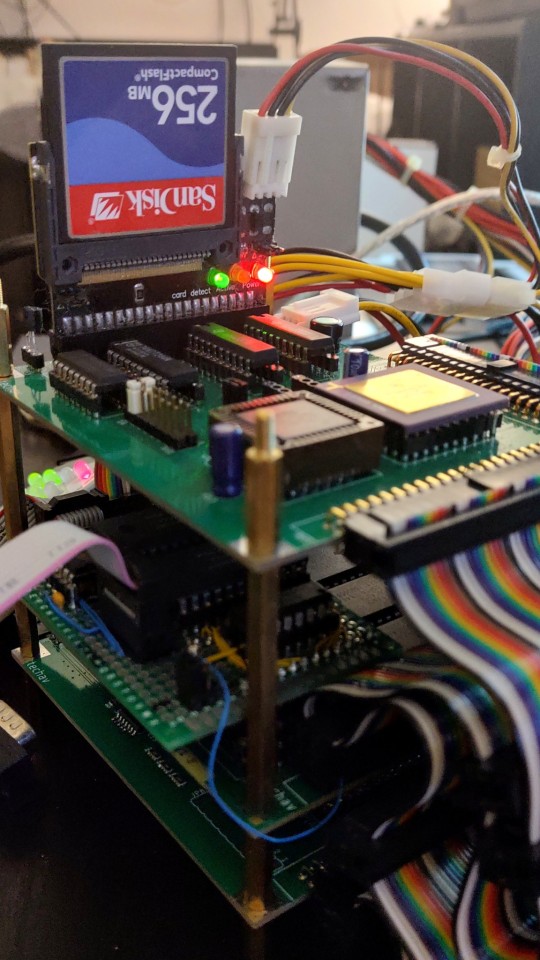
I have more ideas for projects than time or budget to work on them. Already this year I've gone completely through the design process for two new large homebrew projects that are currently too large for my project budget, plus a few small ones I never got around to ordering. So rather than spend more than I should taking on a new project, I decided to revisit an existing one.
It's been over a year since I last worked on the original Wrap030 project — my old stack-of-boards MC68030 system. Its current configuration includes the main board with CPU, ROM, RAM, UART, & glue logic; a hand-wired breakout board to add a second UART; a custom video output board; and a mezzanine board with FPU and provision for an IDE disk that is not yet working. It has been functional in this configuration since last February.
My goal for this project from the beginning was to build something capable of running a proper operating system, like Unix System V or Linux. To do that though, I'm going to need to get disk access working.
I had started on disk access, but didn't quite have it functional when I turned my focus to integrating all of boards into the single Wrap030-ATX motherboard. I had added IDE cycles to the CPLD on the mezzanine board, and had added a few rough drafts of disk functions to my ROM. I set the project aside when I realized my function for checking dish presence was reporting a disk was present when there wasn't one.
I have worked with IDE before — my original 68000 project had an IDE port on it. I had gotten that project to the point where I could read a sector of data from the disk, but never could wrap my head around how to actually navigate even a simple file system like FAT16. It was this code that I had adapted for Wrap030, so when it didn't work, I assumed it was a problem with my logic.
Turns out I had just inadvertently clobbered a register in the disk check function. The logic worked just fine. I was able to write a couple quick BASIC programs to read a sector of data and even run code from the boot sector.


My assembly function for reading data from disk however was still not working.
I tried rewriting it.
I tried rewriting it in C instead of assembly.
I tried again, and again, and again. I added delays and loops and print statements and everything I could think of. I scoured datasheets, read though all the different release versions of the ATA specification, ported code from other projects, looked at every example of reading from an IDE disk I could find.
No matter what I did, I always got the same result.
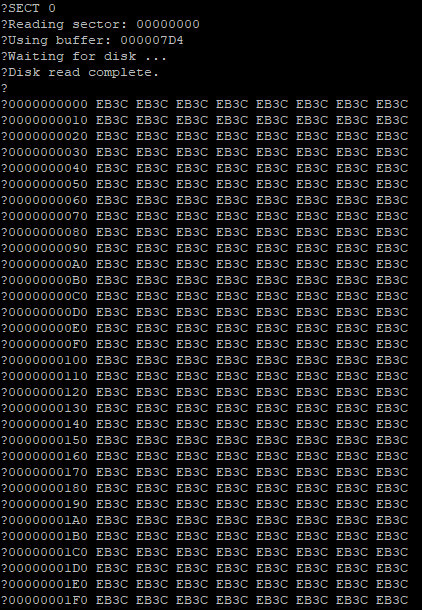
This did not make any sense. Reading from an IDE disk involves setting up the sector address, the number of sectors to transfer, sending a read command, and then reading the IDE data port 256 times per sector. Each time the data port is read, the disk will give another 16-bit word of data. But for some reason, all I was getting was the first word of data returned 256 times.
There is nothing in the specification to explain this.
I knew there was nothing wrong with my logic, because I could read the data just fine with my BASIC program or by manually poking the right addresses using the monitor. Maybe there was some edge case affecting timing when running in assembly, but even adding delay loops and print statements didn't have any effect.
I reached out for help. I got great feedback on my read functions and my timing and how IDE and CompactFlash cards worked, but still could not solve this problem.
But then @ZephyrZ80 noticed something —
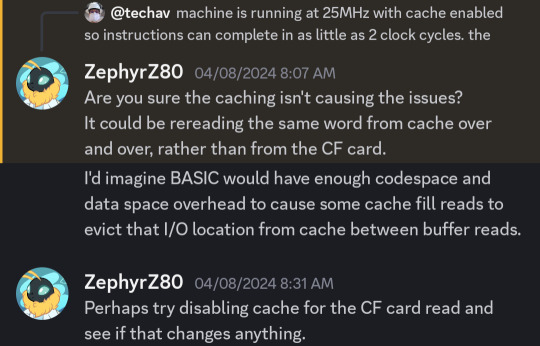
I had shared my code and was explaining that I had added some extra NOP instructions to enforce minimum time between IDE access cycles in PIO-0 mode. At 25MHz with cache enabled, the 68030 can complete an instruction in as little as 80ns, so a few NOPs would ensure enough time elapsed between cycles.
With cache enabled.
… cache enabled.
… cache.
The 68030 has 256 bytes of data cache. My disk read function is running in a tight loop that only really hits a few addresses; not nearly enough to invalidate and flush the entire 256 bytes of cache. The CPU does have a cache inhibit signal to use with peripherals that return new data on subsequent access to the same address, but it turns out I was only asserting it when accessing the UART on the main board.
It's a simple enough hypothesis to test. When I initially added support in my ROM for enabling cache at startup, I included user functions for enabling and disabling cache.
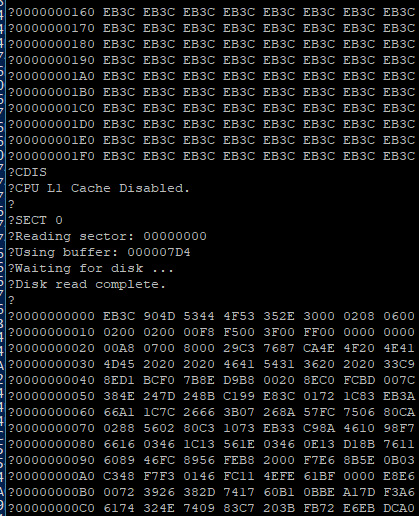
… It was cache all along.
Now I need to add some way to inhibit cache while accessing the IDE port, and then I can move on to trying to use the disk for loading programs.
41 notes
·
View notes
Text
one, i thought my pc got scared bc i downloaded UUI and ubuntu to start learning linux on my tablet bc the pc started whirring loud and disconnecting from monitors but it was just the gpu cable got jostled and re-plugging it in fixed the issue.
two, though - this whole process was drawn out and had me worrying about the Curses because. well the iso is over 5gb and the largest flash drive in my apartment before today was. um. a 4gb memory card into a USB stick with a card slot. this, of all things, is what has made me feel the most old lately. like what am i doing with this floppy disk ass storage tech and nothing else ?
#peter posts#i have e.g. an external hard drive and so on but flash drives? that was IT.#and this fucked up one was inherited from i think 3ds modding/digital camera shenanigans#but also. what do you mean 128gb flash drives are like 15 bucks or less. hello?
4 notes
·
View notes
Text

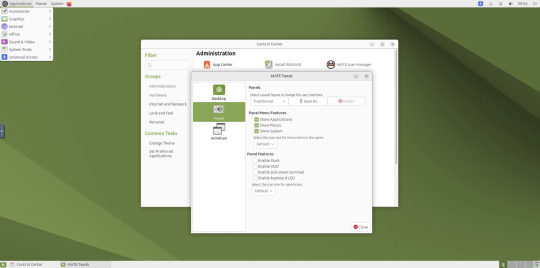
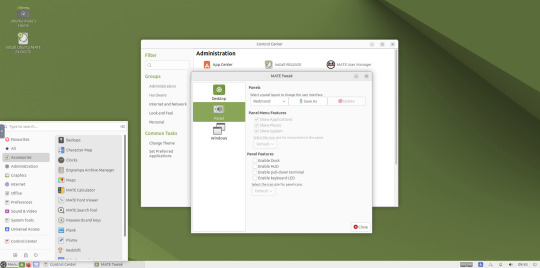
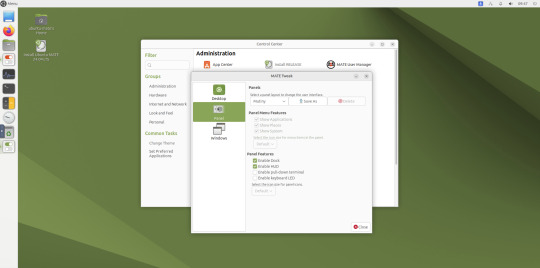
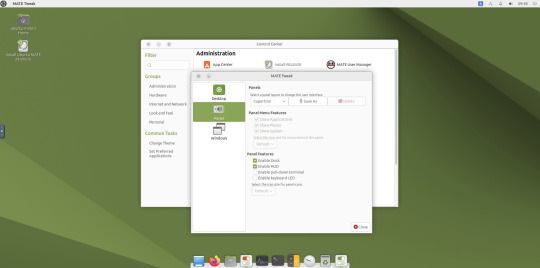
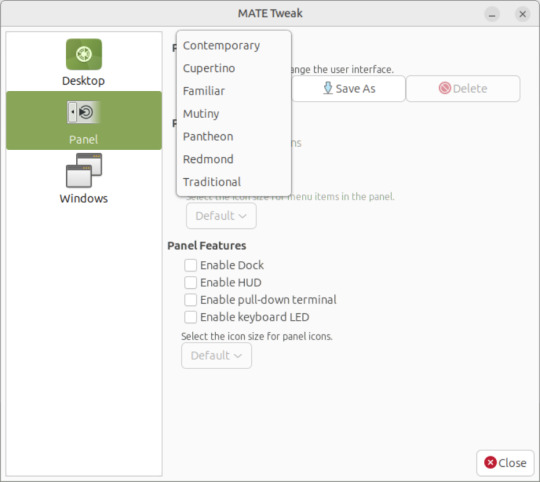
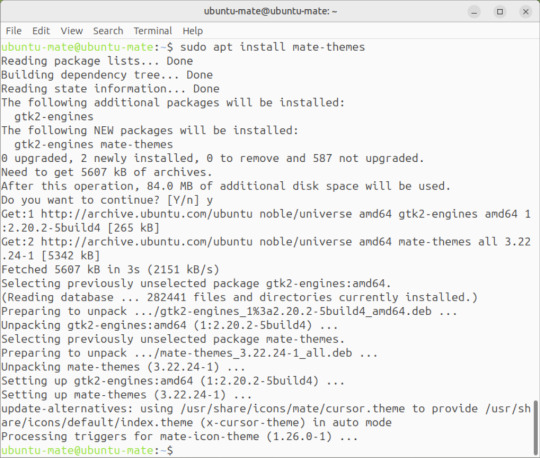

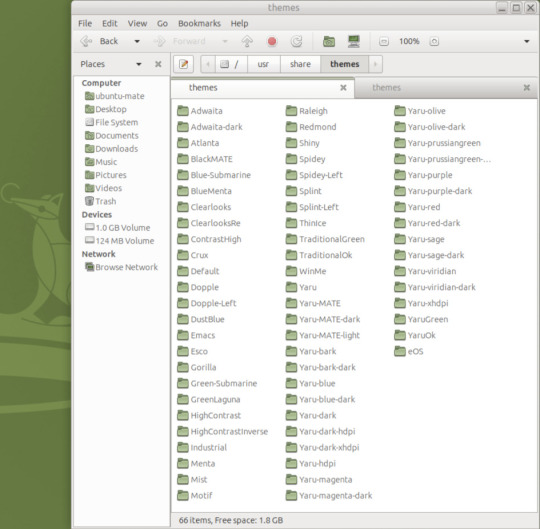
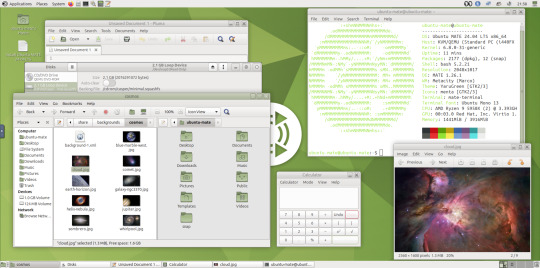
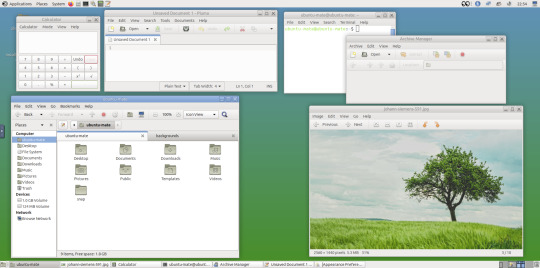
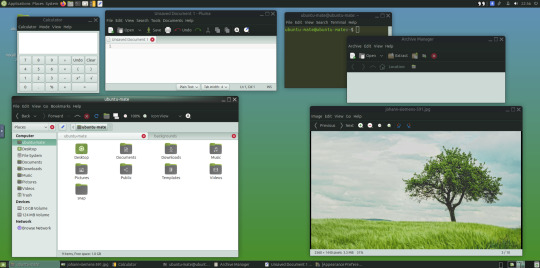
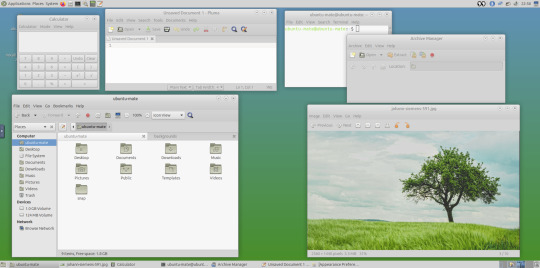
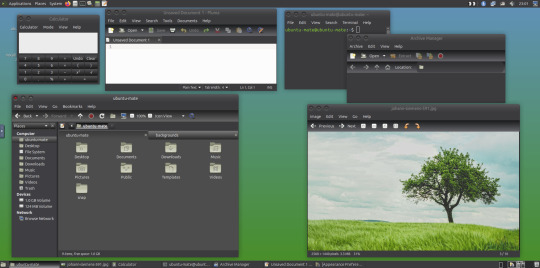

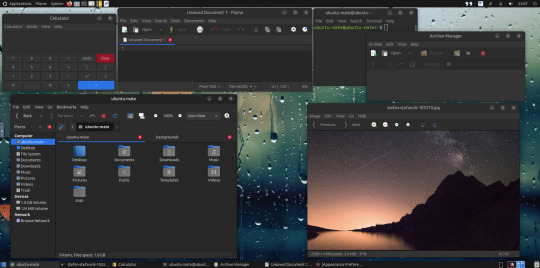

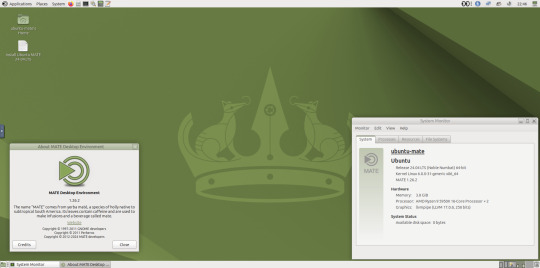

May 2025.
I tried installing a set of themes on Ubuntu MATE 24.04.1 LTS in Distrosea today.
https://distrosea.com/
These themes are provided as a theme package found in vanilla MATE desktops such as Debian and Fedora.
MATE is the modern day continuation of GNOME 2, a very popular, efficient and functional desktop environment from the early 2000s.
The theme pack I selected are compactable GTK3/4 (Graphical Toolkit) versions based on classic GNOME 2 era themes.
Ubuntu MATE website:
https://ubuntu-mate.org/
Debian Linux website:
https://www.debian.org/
Fedora Linux website:
https://fedoraproject.org/spins/mate
See MATE Desktop website here:
https://mate-desktop.org/blog/
About the Graphical Toolkit user interface:
https://en.wikipedia.org/wiki/GTK
I used the MATE Tweak tool to adjust the panels from the 'familiar' layout to the 'traditional' layout. Here are many of the layouts available.
MATE Tweak can change the panel layout between Traditional (GNOME 2), Unity, Redmond (Windows) contemporary (Mac OS) style.
Here are many of the layouts available.
Afterwards, I used the command line to install the themes with the command: sudo apt install mate-themes.
This command then prompted me to agree the system changes and then it installed the required theme files to the list.
I opened up the theme folder in the Caja file manager. This shows all the ones installed on the system.
Next I opened the appearance preferences and cycled through each theme. There are a total of 12 new themes it added alongside the existing Yaru Colour theme collection for Ubuntu.
This package couldn't be installed graphical so this is why I installed it through the terminal. It is also available to install through the Software Manager on Linux Mint.
The theme package can also be installed on the Cinnamon desktop and other linux distributions.
I like these themes as they provide a more 3D feel and is refreshing to see themes for a desktop environment that hasn't moved towards flat design. It themes all the desktop elements from the windows, panels, drop down menus, CSD apps and widgets.
My favourite one is called YaruOK (blue), as it provides resizable window controls, 3D controls and provides a familiar look to the desktop. The theme is also called TraditionalOK.
This theme is a fork of a GTK2 theme called Clear-looks, which was created by Red Hat developers.
YaruOK is a modern variant that uses GTK3 & 4. The theme is rendered in SVG instead of PNG format which improves HiDpi scaling and features themed client side decorations for header bar windows such as the Disks utility.
I also added a GNOME Eyes widget onto the panel!
These fun set of eyes follow your mouse cursor around the screen and can help you find the cursor amongst the clutter of windows. It is built to be very lightweight.
I also like the workspace switcher on the bottom left, which allows you to switch between as many desktop workspaces as you want.
The little square windows within each desktop can be clicked on and moved to another workspace.
Like with other desktop environments, you can also right click a window and move it onto another workspace. Each desktop can be named for a assigned task.
A System Monitor widget can also be added to the panels to display CPU, Memory, Swap and Network processes.
There are many other very interesting widget to play around with on the desktop and panels as well!
Here are the MATE themes in Ubuntu Linux 24.04.1, integrating with the Cinnamon desktop.
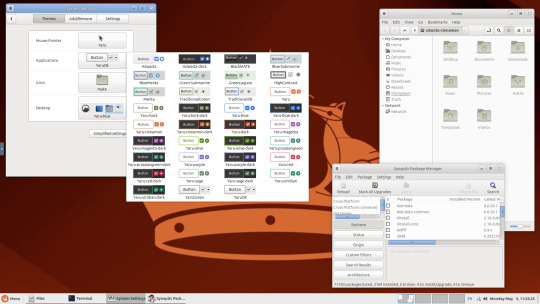
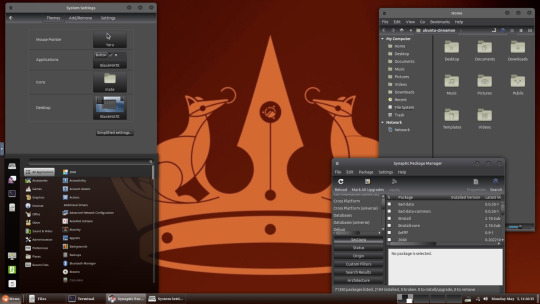
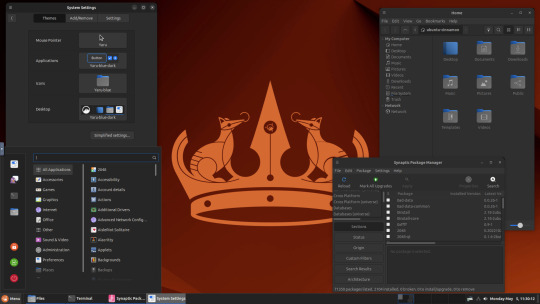
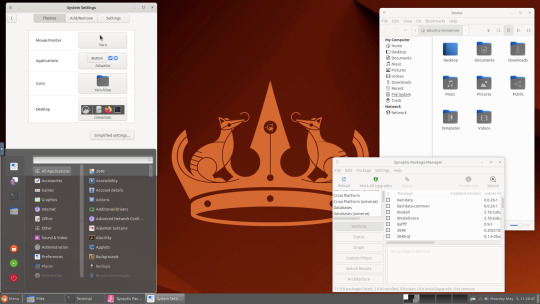
Below are some theming screenshots from Debian MATE 12 Linux.
I've customised the panel, selected the compact menu and changed notification sizes to make it more clearer. The window lists stack onto each other with the increased size.
The MATE panels have adjustable transparency and can be re-coloured and textured very easily through its own preferences box.
See screenshots below!
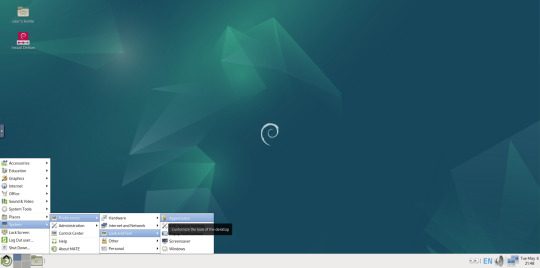
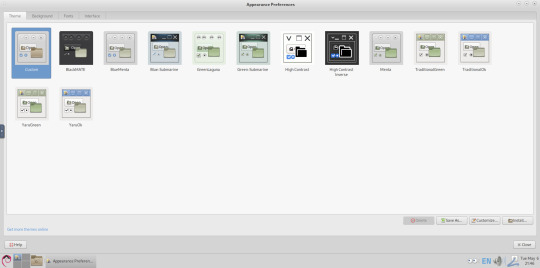
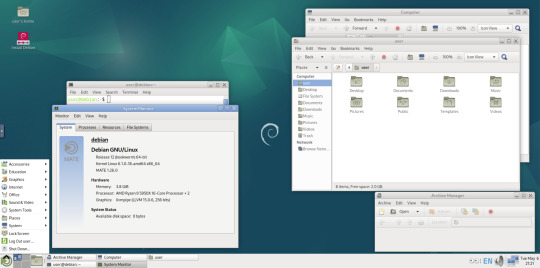
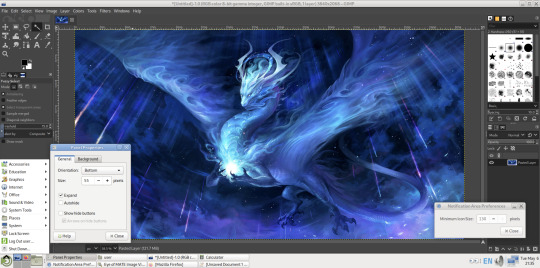
A very interesting look at the user interface elements found in GNOME 2, MATE and Cinnamon Linux desktop environments!
5 notes
·
View notes
Text

Valve has released a 25th anniversary update for Half-Life.
Half-Life is free to own on Steam until November 20, 2023 10AM PT / 1PM ET.
Overview
BRAND NEW INTERVIEWS WITH THE HL1 DEV TEAM!
youtube
We got the band back together to celebrate this anniversary, and we invited the fine people at Secret Tape to film it all happening. Getting together after all this time was the perfect opportunity to revisit the game as it existed in its earliest forms, and to talk about how and why it eventually took shape the way it did. Check out the film to see what it was like to be a part of the team, way back then.
THE 25TH ANNIVERSARY UPDATE FOR HALF-LIFE INCLUDES:
HALF-LIFE UPLINK
Originally released as a CD exclusive for magazines and hardware manufacturers, this mini-campaign was built by the Half-Life team right after the game went gold. As this was many people's first experience with Half-Life, we thought it was finally time to bundle it with the main game—no sound card purchase necessary.


4 NEW MULTIPLAYER MAPS
Built by Valve level designers, these new maps push the limits of what's possible in the Half-Life engine.
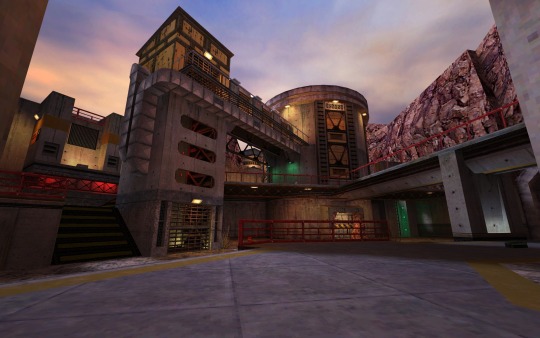
CONTAMINATION
Two-foot-thick steel doors block off access to this contaminated waste facility, which has questionable scientific goals at best. Strap on a gluon gun and roast all intruders.
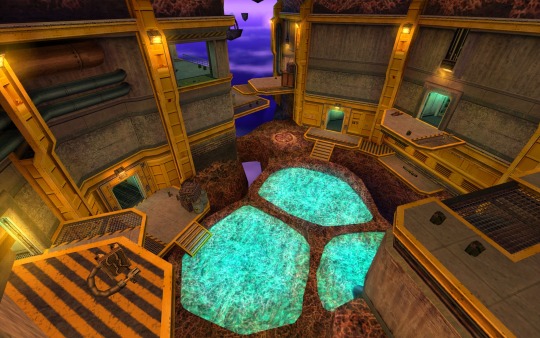
POOL PARTY
Enjoy a relaxing stay at this abandoned Xen outpost built around a cluster of soothing healing pools free-floating in space. How do you breathe here? It doesn't matter!

DISPOSAL
Processing Area 3, a massive radioactive waste plant gone quiet. Tons of room for you and your colleagues to do experiments with a Tau Cannon or some hand grenades.

ROCKET FRENZY
The creaking weight of this decaying orbital satellite launch facility somehow feels familiar… If we could switch on the oxygen lines, power, and fuel, we might just be able to light this candle.
UPDATED GRAPHICS SETTINGS
Play the game the way it looked in 1998, but on a modern monitor.
Widescreen field of view!
Option to disable texture smoothing on the GL renderer!
Lighting fixes including the long-lost GL Overbright support!
Software rendering on Linux! Crisp colors, animated water, and unfiltered textures!
CONTROLLER AND STEAM NETWORKING SUPPORT
A proper gamepad config out of the box!
Added support for Steam Networking! Invite your friends or join games instantly with no fuss.
STEAM DECK SUPPORT!

We finally put our game through our own “Verified” tests, and... we failed super hard. So we fixed it! After re-testing the game, Half-Life gets to officially wear the green checkmark.
Now you can play Half-Life on the best handheld gaming computer in the world in glorious 800p with improved controls and UI.
UI SCALING SUPPORT FOR HIGHER RESOLUTIONS
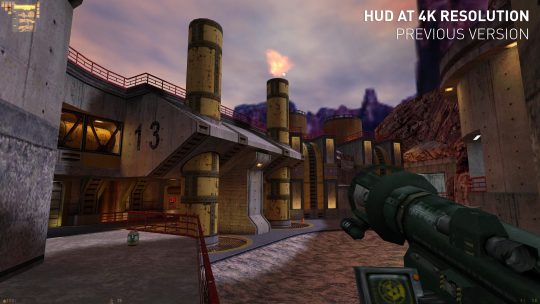
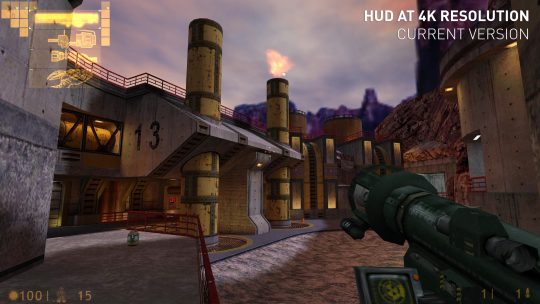
The entire UI has been reworked to scale at larger screen sizes. We built most of this stuff for 640x480 CRTs and apparently some of you have upgraded since then.
RESTORED CONTENT
We brought back the classic Valve logo video with its iconic music and reskinned the menu to match the 1998 build.
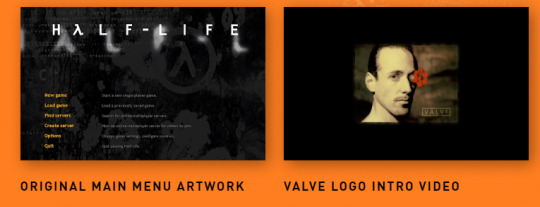
IVAN THE SPACE BIKER AND PROTO-BARNEY

After all this time we finally shipped the original heroes from the alpha builds of Half-Life, available as multiplayer skins!
AS WELL AS THESE RARELY-SEEN EXTRAS!
In 1999, Valve released a CD called Half-Life: Further Data at retail stores, and we're finally including much of that content.
THREE MULTIPLAYER MAPS

Double Cross

Rust Mill

Xen DM
TWO MP PLAYER MODELS

The Half-Life: Further Data CD also included some multiplayer skins made by the original team; we've brought back this incredible skeleton (now with tintable eyes!) and fan-favorite Too Much Coffee Man.
DOZENS OF SPRAYS

While playing a bunch of multiplayer matches we kept wanting more sprays... So we grabbed several megabytes of them from the Further Data release!
BUG FIXES AND CHANGE NOTES
New Content
Now Verified on the Steam Deck (and our native Linux runtime has been set as the default).
Half-Life: Uplink — the original standalone Half-Life demo — has been added to the game, and is accessible through the "New Game" menu.
Added four all-new Half-Life Deathmatch maps: contamination, pool_party, disposal, and rocket_frenzy
Added three old Half-Life Deathmatch maps formerly available only on the "Half-Life: Further Data" CD: doublecross, rust_mill, xen_dm.
Added Ivan the Space Biker, Prototype Barney, Skeleton, and Too Much Coffee Man as player models to Half-Life Deathmatch.
Added dozens of new sprays formerly available only on the "Half-Life: Further Data" CD.
Added support for Steam Networking, allowing easy multiplayer via Steam's Join Game and Invite features.
Added support for Steam Friends Rich Presence, allowing your friends to follow your journey through Black Mesa.
Nostalgia
Brought back the original Valve Intro video. Can be skipped with the "-novid" launch command.
Updated main menu to a design inspired by the game's original 1998 main menu.
Changed the default models to the original (non "HD") models.
Gameplay Changes
Improved physics for throwing grenades.
Improved randomness for initial spawn points in multiplayer.
Improved satchel charge controls: primary fire now always throws a new satchel, and secondary fire always detonates.
Fixed push-able entity movement being based on framerate.
Fixed players with high framerates freezing in place on death in multiplayer.
Fixed some cases where the player could get stuck in place on level transitions.
Fixed some cases where characters would interrupt important dialogue with their "greetings" dialogue.
Fixed weapon view-bob angles.
Fixed red barrels at the start of Surface Tension not launching as intended.
Fixed Snarks attacking FL_WORLDBRUSH entities (such as func_walls).
Fixed players sometimes failing to deploy a snark while crouching and looking down.
Fixed certain convars ("pausable" and "sv_maxspeed") being set to incorrect values when entering a singleplayer game after a multiplayer game.
Fixed singleplayer auto-aim setting being changed when entering a multiplayer game that disallows auto-aim.
Fixed the flashlight HUD showing empty after loading a savegame.
Fixed rockets in CONTENTS_SKY not always detonating.
Fixed incorrect bullet impact sounds for NPCs.
Fixed gauss gun making a loud static noise if it was charged across level transitions.
Fixed a crash in mods that display keybinds in their UI.
Fixed singleplayer weapons not auto-switching away when exhausted (grenades / snarks / satchels / etc)
Fixed interpolation artifacts when animated models are moved by other entities.
Fixed some buffer overflow exploits.
UI Changes
Main-menu background and buttons have been reskinned, and now scale based upon screen resolution without stretching, supporting background image layouts up to 3840x1600.
In-Game HUD now uses double or triple sized sprites when playing at higher resolutions.
UI dialogs and in-game fonts now scale to improve readability at high screen resolutions.
In-Game HUD HEV suit display has been shifted to the left of the screen, and no longer changes position at larger screen resolutions.
Added an "Enable texture filtering" setting.
Added an "Allow widescreen Field of View" setting to correct non-anamorphic FOVs, for widescreen and ultrawide displays.
Re-organized all the Settings screens to improve legibility, and support controller navigation.
Updated the Pause menu to be aware of the current gameplay mode.
The default server name and multiplayer player name are now based on the player's Steam Persona.
The Steam platform menu has been removed, now that all its features are in Steam itself.
Fixed application icon rendering incorrectly when using the software renderer.
Fixed player and spray images not updating their coloring on the settings screen.
Removed the now very unnecessary "Low video quality. Helps with slower video cards." setting.
Input Changes
Improved support for keyboard and controller navigation everywhere.
Added "Lower Input Latency" option: Synchronizes the CPU and GPU to reduce the time between input and display output.
Fixed issues that caused jerky mouse / joystick input.
(We basically rewrote it all - if you've got a custom Steam Input controller configuration, you should rebuild it from our newly published Official Configuration).
Multiplayer Balancing
Increased the 357 damage from 40 → 50.
Hive Hand reload time has been reduced from 0.5s → 0.3s per shot, and it will be selected at higher priority than the pistol on pickup.
MP5 now always starts it with full ammo when picked up.
Players no longer drop empty weapons, and any that are dropped are reloaded by what's in the dying player's backpack.
Improved client-side prediction to reduce "ghost shots". Like Counter-Strike, consider hitboxes and not just bounding boxes for hits on the client.
Fixed network predicted crowbar swing damage being incorrect.
Rendering
Added supported for UI Sprites and Texture files larger than 256x256.
Added support for UI Font special render modes: "blur" and "additive".
Added setting to turn off texture filtering when using the OpenGL renderer.
Default resolution is now based on the resolution of the desktop, instead of a 640x480 window.
Default gamma has been decreased from 2.5 → 2.2, now that we aren't all playing on CRTs.
Software renderer will now correctly filter out incompatible resolutions, unless there is only 1 resolution available on the display.
Restored OpenGL overbright support.
Fixed fullscreen software renderer crashing on systems that don't support 16-bit color.
Fixed software renderer being stretched when using widescreen resolutions.
Fixed skyboxes and sky color incorrectly carrying over when transitioning maps in multiplayer.
Fixed the game appearing too dark after modifying video settings.
Fixed MSAA in windowed mode.
Fixed mipmap rendering on studio models.
Fixed gluon gun sprite rendering in multiplayer.
Fixed gluon gun sinusoidal noise being incorrect.
Various optimizations to support the newly increased engine limits.
OpenGL optimizations for the Steam Deck.
Engine Improvements for Mod Makers
Increased maximum limit of dynamic sound channels from 8 → 32.
Increased maximum limit of sentences in the sentences.txt file from 1536 → 2048.
Increased maximum number of entities (MAX_EDICTS) from 900 → 1200.
Increased MAX_PACKET_ENTITIES increased from 256 → 1024.
Increased MAX_GLTEXTURES from 4800 → 10000.
Increased software renderer geometry limits: max spans 3000 → 6000, max surfaces 2000 → 4000, and max edges 7200 → 14400.
Cycler and func_button entities can now be the entity target for scripted_sentence entities, and are allowed to speak in multiplayer.
Incorporated func_vehicle entity support from Counter-Strike, for mod-makers to use. Full SDK update will come later, but level designers can use it now.
Native Linux Build
Added support for the software renderer.
Improved font rendering.
Many stability and behavior fixes.
Other
Localization files updated.
Miscellaneous security fixes.
Notes
The previous version of the game has been archived to a publicly visible Beta branch named "steam_legacy", with the description "Pre-25th Anniversary Build." If a mod or feature is behaving in an unexpected way, you may need to run this archived build until the issue is resolved in the default build.
We now consider this anniversary version of Half Life to be the definitive version, and the one we'll continue to support going forward. Therefore, we'll be reducing the visibility of Half Life: Source on the Steam Store. We know Half-Life: Source's assets are still being used by the Source engine community, so it'll remain available, but we'll be encouraging new Half-Life players to play this version instead.
WALLPAPERS
Celebrate 25 years of Half-life by decorating your desktop and mobile phone.








33 notes
·
View notes
Text
KDE Plasma 6.4 released
Plasma is a popular desktop (and mobile) environment for GNU/Linux and other UNIX-like operating systems. Among other things it also powers the desktop mode of Steam Deck gaming handheld. The KDE community today announced the latest release: Plasma 6.4. This fresh new release improves on nearly every front, with progress being made in accessibility, color rendering, tablet support, window management, and more.
Plasma already offered virtual desktops and customizable tiles to help organize your windows and activities, and now it lets you choose a different configuration of tiles on each virtual desktop. The Wayland session brings some new accessibility features: you can now move the pointer using your keyboard’s number pad keys, or use a three-finger touchpad pinch gesture to zoom in or out. Plasma file transfer notification now shows a speed graph, giving you a more visual idea of how fast the transfer is going, and how long it will take to complete. When any applications are in full screen mode Plasma will now enter Do Not Disturb mode and only show urgent notifications, and when you exit full screen mode, you’ll see a summary of any notifications you missed. Now when an application tries to access the microphone and finds it muted, a notification will pop up. A new feature in the Application Launcher widget will place a green New! tag next to newly installed apps, so you can easily find where something you just installed lives in the menu. The Display and Monitor page in System Settings comes with a brand new HDR calibration wizard, and support for Extended Dynamic Range (a different kind of HDR) and P010 video color format has been added. System Monitor now supports usage monitoring for AMD and Intel graphic cards, it can even show the GPU usage on a per-process basis. Spectacle, the built-in app for taking screenshots and screen recordings, has much improved design and more streamlined functionality. The background of the desktop or window now darkens when an authentication dialog shows up, helping you locate and focus on the window asking for your password. There’s a brand-new Animations page in System Settings that groups all the settings for purely visual animated effects into one place, making it easier to find and configure them. Aurorae is a newly added SVG vector graphics theme engine for KWin window decorations.
You can read more about these and many other other features in the Plasma 6.4 anounncement and complete changelog.
#linux#freesoftware#free software#opensource#open source#software#computers#operatingsystems#operating systems#information technology#informationtechnology#kde#kde plasma#gnu#unix#bsd
2 notes
·
View notes
Note
okay then give me your controversial linux opinions!
Thanks!
systemd is fine but you should use others to know how an init was supposed to work
Manjaro is worse than the devil
FISH is bad because people see fish features and assume they're exclusive to fish (not true)
ZSH is the Best Shell and we should link it to /bin/sh and everything. OhMyZsh is a crime against humanity, which adds runtime bloat to zsh and pushes people onto fish
Disk space bloat is good, actually. Give me all the files. This is completely different from runtime bloat
Powershell is actually a decent language for Linux scripts. It has types and can process json but shell commands are trivial as well.
GNOME system monitor is a better task manager than htop
The only filesystem you should ever need is BTRFS
Emacs is the best vim
21 notes
·
View notes
Text
How-To IT
Topic: Core areas of IT
1. Hardware
• Computers (Desktops, Laptops, Workstations)
• Servers and Data Centers
• Networking Devices (Routers, Switches, Modems)
• Storage Devices (HDDs, SSDs, NAS)
• Peripheral Devices (Printers, Scanners, Monitors)
2. Software
• Operating Systems (Windows, Linux, macOS)
• Application Software (Office Suites, ERP, CRM)
• Development Software (IDEs, Code Libraries, APIs)
• Middleware (Integration Tools)
• Security Software (Antivirus, Firewalls, SIEM)
3. Networking and Telecommunications
• LAN/WAN Infrastructure
• Wireless Networking (Wi-Fi, 5G)
• VPNs (Virtual Private Networks)
• Communication Systems (VoIP, Email Servers)
• Internet Services
4. Data Management
• Databases (SQL, NoSQL)
• Data Warehousing
• Big Data Technologies (Hadoop, Spark)
• Backup and Recovery Systems
• Data Integration Tools
5. Cybersecurity
• Network Security
• Endpoint Protection
• Identity and Access Management (IAM)
• Threat Detection and Incident Response
• Encryption and Data Privacy
6. Software Development
• Front-End Development (UI/UX Design)
• Back-End Development
• DevOps and CI/CD Pipelines
• Mobile App Development
• Cloud-Native Development
7. Cloud Computing
• Infrastructure as a Service (IaaS)
• Platform as a Service (PaaS)
• Software as a Service (SaaS)
• Serverless Computing
• Cloud Storage and Management
8. IT Support and Services
• Help Desk Support
• IT Service Management (ITSM)
• System Administration
• Hardware and Software Troubleshooting
• End-User Training
9. Artificial Intelligence and Machine Learning
• AI Algorithms and Frameworks
• Natural Language Processing (NLP)
• Computer Vision
• Robotics
• Predictive Analytics
10. Business Intelligence and Analytics
• Reporting Tools (Tableau, Power BI)
• Data Visualization
• Business Analytics Platforms
• Predictive Modeling
11. Internet of Things (IoT)
• IoT Devices and Sensors
• IoT Platforms
• Edge Computing
• Smart Systems (Homes, Cities, Vehicles)
12. Enterprise Systems
• Enterprise Resource Planning (ERP)
• Customer Relationship Management (CRM)
• Human Resource Management Systems (HRMS)
• Supply Chain Management Systems
13. IT Governance and Compliance
• ITIL (Information Technology Infrastructure Library)
• COBIT (Control Objectives for Information Technologies)
• ISO/IEC Standards
• Regulatory Compliance (GDPR, HIPAA, SOX)
14. Emerging Technologies
• Blockchain
• Quantum Computing
• Augmented Reality (AR) and Virtual Reality (VR)
• 3D Printing
• Digital Twins
15. IT Project Management
• Agile, Scrum, and Kanban
• Waterfall Methodology
• Resource Allocation
• Risk Management
16. IT Infrastructure
• Data Centers
• Virtualization (VMware, Hyper-V)
• Disaster Recovery Planning
• Load Balancing
17. IT Education and Certifications
• Vendor Certifications (Microsoft, Cisco, AWS)
• Training and Development Programs
• Online Learning Platforms
18. IT Operations and Monitoring
• Performance Monitoring (APM, Network Monitoring)
• IT Asset Management
• Event and Incident Management
19. Software Testing
• Manual Testing: Human testers evaluate software by executing test cases without using automation tools.
• Automated Testing: Use of testing tools (e.g., Selenium, JUnit) to run automated scripts and check software behavior.
• Functional Testing: Validating that the software performs its intended functions.
• Non-Functional Testing: Assessing non-functional aspects such as performance, usability, and security.
• Unit Testing: Testing individual components or units of code for correctness.
• Integration Testing: Ensuring that different modules or systems work together as expected.
• System Testing: Verifying the complete software system’s behavior against requirements.
• Acceptance Testing: Conducting tests to confirm that the software meets business requirements (including UAT - User Acceptance Testing).
• Regression Testing: Ensuring that new changes or features do not negatively affect existing functionalities.
• Performance Testing: Testing software performance under various conditions (load, stress, scalability).
• Security Testing: Identifying vulnerabilities and assessing the software’s ability to protect data.
• Compatibility Testing: Ensuring the software works on different operating systems, browsers, or devices.
• Continuous Testing: Integrating testing into the development lifecycle to provide quick feedback and minimize bugs.
• Test Automation Frameworks: Tools and structures used to automate testing processes (e.g., TestNG, Appium).
19. VoIP (Voice over IP)
VoIP Protocols & Standards
• SIP (Session Initiation Protocol)
• H.323
• RTP (Real-Time Transport Protocol)
• MGCP (Media Gateway Control Protocol)
VoIP Hardware
• IP Phones (Desk Phones, Mobile Clients)
• VoIP Gateways
• Analog Telephone Adapters (ATAs)
• VoIP Servers
• Network Switches/ Routers for VoIP
VoIP Software
• Softphones (e.g., Zoiper, X-Lite)
• PBX (Private Branch Exchange) Systems
• VoIP Management Software
• Call Center Solutions (e.g., Asterisk, 3CX)
VoIP Network Infrastructure
• Quality of Service (QoS) Configuration
• VPNs (Virtual Private Networks) for VoIP
• VoIP Traffic Shaping & Bandwidth Management
• Firewall and Security Configurations for VoIP
• Network Monitoring & Optimization Tools
VoIP Security
• Encryption (SRTP, TLS)
• Authentication and Authorization
• Firewall & Intrusion Detection Systems
• VoIP Fraud DetectionVoIP Providers
• Hosted VoIP Services (e.g., RingCentral, Vonage)
• SIP Trunking Providers
• PBX Hosting & Managed Services
VoIP Quality and Testing
• Call Quality Monitoring
• Latency, Jitter, and Packet Loss Testing
• VoIP Performance Metrics and Reporting Tools
• User Acceptance Testing (UAT) for VoIP Systems
Integration with Other Systems
• CRM Integration (e.g., Salesforce with VoIP)
• Unified Communications (UC) Solutions
• Contact Center Integration
• Email, Chat, and Video Communication Integration
2 notes
·
View notes
Text

SYSTEM ADMIN INTERVIEW QUESTIONS 24-25
Table of Content
Introduction
File Permissions
User and Group Management:
Cron Jobs
System Performance Monitoring
Package Management (Red Hat)
Conclusion
Introduction
The IT field is vast, and Linux is an important player, especially in cloud computing. This blog is written under the guidance of industry experts to help all tech and non-tech background individuals secure interviews for roles in the IT domain related to Red Hat Linux.
File Permissions
Briefly explain how Linux file permissions work, and how you would change the permissions of a file using chmod. In Linux, each file and directory has three types of permissions: read (r), write (w), and execute (x) for three categories of users: owner, group, and others. Example: You will use chmod 744 filename, where the digits represent the permission in octal (7 = rwx, 4 = r–, etc.) to give full permission to the owner and read-only permission to groups and others.
What is the purpose of the umask command? How is it helpful to control default file permissions?umask sets the default permissions for newly created files and directories by subtracting from the full permissions (777 for directories and 666 for files). Example: If you set the umask to 022, new files will have permissions of 644 (rw-r–r–), and directories will have 755 (rwxr-xr-x).
User and Group Management:
Name the command that adds a new user in Linux and the command responsible for adding a user to a group. The Linux useradd command creates a new user, while the usermod command adds a user to a specific group. Example: Create a user called Jenny by sudo useradd jenny and add him to the developer’s group by sudo usermod—aG developers jenny, where the—aG option adds users to more groups without removing them from other groups.
How do you view the groups that a user belongs to in Linux?
The group command in Linux helps to identify the group a user belongs to and is followed by the username. Example: To check user John’s group: groups john
Cron Jobs
What do you mean by cron jobs, and how is it scheduled to run a script every day at 2 AM?
A cron job is defined in a crontab file. Cron is a Linux utility to schedule tasks to run automatically at specified times. Example: To schedule a script ( /home/user/backup.sh ) to run daily at 2 AM: 0 2 * * * /home/user/backup.sh Where 0 means the minimum hour is 2, every day, every month, every day of the week.
How would you prevent cron job emails from being sent every time the job runs?
By default, cron sends an email with the output of the job. You can prevent this by redirecting the output to /dev/null. Example: To run a script daily at 2 AM and discard its output: 0 2 * * * /home/user/backup.sh > /dev/null 2>&1
System Performance Monitoring
How can you monitor system performance in Linux? Name some tools with their uses.
Some of the tools to monitor the performance are: Top: Live view of system processes and usage of resource htop: More user-friendly when compared to the top with an interactive interface. vmstat: Displays information about processes, memory, paging, block IO, and CPU usage. iostat: Showcases Central Processing Unit (CPU) and I/O statistics for devices and partitions. Example: You can use the top command ( top ) to identify processes consuming too much CPU or memory.
In Linux, how would you check the usage of disk space?
The df command checks disk space usage, and Du is responsible for checking the size of the directory/file. Example: To check overall disk space usage: df -h The -h option depicts the size in a human-readable format like GB, MB, etc.
Package Management (Red Hat)
How do you install, update, or remove packages in Red Hat-based Linux distributions by yum command?
In Red Hat and CentOS systems, the yum package manager is used to install, update, or remove software. Install a package: sudo yum install httpd This installs the Apache web server. Update a package: sudo yum update httpd Remove a package:sudo yum remove httpd
By which command will you check the installation of a package on a Red Hat system?
The yum list installed command is required to check whether the package is installed. Example: To check if httpd (Apache) is installed: yum list installed httpd
Conclusion
The questions are designed by our experienced corporate faculty which will help you to prepare well for various positions that require Linux such as System Admin.
Contact for Course Details – 8447712333
2 notes
·
View notes
Text
Elevate Your Business with Affordable Efficiency: A Comprehensive Guide to Cheap Linux VPS

In today's fast-paced digital world, efficiency and cost-effectiveness are at the forefront of business priorities. A Cheap Linux VPS (Virtual Private Server) provides a compelling solution, combining the robustness of a dedicated server with the affordability of shared hosting. This guide explores how small to medium-sized businesses can harness the full potential of Linux VPS to boost their online presence, enhance security, and manage data seamlessly.
Linux VPS hosting is a virtual hosting platform that imitates the working of dedicated hosting in general hosting. It supports the Linux operating system and this provides users with the ability to control and manage their own server space. In this section, you’ll understand how Linux VPS works and why it’s important that it can offer your web applications their separate environment – essential if your business is focusing on stability and performance on a limited budget.
Cost-Effective Hosting Solutions
Transitioning to a Linux VPS can significantly reduce your web hosting costs. Unlike traditional dedicated servers that come with high monthly fees, Linux VPS offers a cost-effective alternative without compromising on the services and capabilities offered. This part of the blog examines how the affordability of Linux VPS makes it an ideal choice for businesses aiming to optimize their IT budget while still enjoying high-quality server performance.
Customization and Control
It has been established that Linux VPS is highly customizable, which makes it even more unique. Users have root control over their servers to install the software as well as configure the settings inclusive of the permission levels that they wish to set on their servers. In this level, we are going to understand how this level of control is favorable for your business to customize server environments that meet and complement your business operations.
Enhanced Security
The ‘Enhanced Security’ section emphasizes the fact that Cheap Linux VPS comes equipped with a range of high-level safeguards by default, thus allowing its users to enjoy premium protection services at an affordable price. Linux VPS services include flexibility, featuring firewalls, and intrusion detection systems to enhance the security of data held in servers. The emphasis on security is essential for preserving the compliance, discretion, and safety of commercial processes and reducing concerns. Linux VPS has secure hosting features thus protecting from external and internal threats through the appropriate measures of access control measures and real-time security monitoring features. As a result of this improved security, it becomes possible for businesses to entrust Linux VPS hosting for the security of their digital products.
Scalability and Flexibility
The ‘Scalability and Flexibility’ part highlights the opulence of Cheap Linux VPS, which is capable of adjusting instantly to the company’s growth. Auto scale: With Linux VPS, the possibility of growing resources such as CPU RAM, and disk space is straightforward and does not cause much downtime when the traffic increases or during the expansion of several projects. This capability guarantees that corporations can run at optimum in sharp contrast to bandwidth; it offers the capacity to alter resources in actual time. Also, the possibility of having fewer resources during less busy times proves useful to reduce operating expenses while still being a very efficient and versatile hosting service for various enterprises. As an illustration, this section embraces explanations of how Linux VPS serves as a pillar to businesses that want to expand without being limited by traditional hosting platforms.
Performance and Reliability
Quality is one of the key factors of software, hardware, or service delivery, and it entails efficiency and effectiveness. High performance means that the tasks of a system are executed quickly and without complications, which is an important aspect of guaranteeing the efficiency of these services. While, reliability ensures dependability over time, both in terms of actual time and number of times a system is used, and it assures minimal breakdowns and failures. Combined, these are crucial preconditions for the formation of trust and reliability in technology and services for users to rely on for their work and operation. It has been found that with an organization having excellent performance and reliability in their products and services, the chances of customers sticking to the product, minimal downtimes, and enhanced competitive advantage are realized.
Software and Application Support
The ‘Software and Application Support’ section draws attention to Cheap Linux VPS’s compatibility with various software and applications which is one of the major parts of its core offer. Linux VPS incorporates multiple features, including web hosting control panels, custom development frameworks, and databases like Node. Js and MySQL, satisfying various requirements of businesses. This integrated support guarantees the technologies that are being used by businesses are compatible with the tools needed in their adoption process. Also, the use of the Open-source Linux operating system and the Linux community provides a pool of software that can be used free of charge This makes the utilization of the VPS very effective and cost-efficient apart from its flexibility. It is highlighted in this section that Linux VPS not only means a versatile solution for a wide variety of applications but also means an environment for experimentation and distinct personalization.
Conclusion
Selecting an affordable Linux VPS is a wise choice as doing so provides several benefits on costs, security measures, server plans, and the environment. Both Linux VPS are highly suitable for businesses ranging from start-ups to well-established companies because it is cost-effective, dependable, and efficient. Welcome Linux VPS, as the core of Linux hosting services, opens doors to enormous opportunities for your business.
2 notes
·
View notes
Text
Unlocking the Power of Budget-Friendly Linux Reseller Hosting
Introduction
In the ever-evolving landscape of web hosting, finding the right solution that strikes a perfect balance between affordability and performance is crucial for businesses aiming to establish a robust online presence. At Our Hosting Solutions, we understand the unique needs of our clients, and we are excited to introduce you to the game-changing world of Budget-Friendly Linux Reseller Hosting.
What is Linux Reseller Hosting?
Linux Reseller Hosting is a powerful hosting solution that leverages the reliability and stability of the Linux operating system. As a reseller, you gain the ability to allocate resources and host multiple websites under your own brand. This cost-effective solution empowers entrepreneurs, small businesses, and developers to manage multiple websites seamlessly.
Advantages of Budget-Friendly Linux Reseller Hosting
1. Cost-Effectiveness
One of the standout features of Linux Reseller Hosting is its budget-friendly nature. Our Hosting Solutions recognizes the importance of providing affordable options without compromising on quality. With Linux Reseller Hosting, you can enjoy robust hosting capabilities at a fraction of the cost compared to other hosting solutions.
2. Reliability and Stability
Linux, known for its rock-solid stability, forms the backbone of our reseller hosting service. This ensures a secure and reliable hosting environment for your websites. Experience minimal downtime and superior performance, contributing to a seamless online experience for your visitors.
3. Customization and Branding
We understand the significance of branding in the digital landscape. With Linux Reseller Hosting, you have the freedom to customize your hosting packages and present them under your brand name. This not only enhances your brand identity but also allows you to tailor services according to your clients' specific needs.
Setting Up Your Linux Reseller Hosting
1. Easy Deployment
Getting started with Our Hosting Solutions is a breeze. Our user-friendly control panel simplifies the process of setting up your Linux Reseller Hosting. You can effortlessly manage client accounts, allocate resources, and monitor performance, all from a centralized and intuitive interface.
2. Scalability
As your business grows, so do your hosting needs. Our Linux Reseller Hosting is designed to scale with your business requirements. Easily upgrade resources and accommodate an increasing number of clients without any hassle.
Superior Customer Support
At Our Hosting Solutions, we pride ourselves on providing exceptional customer support. Our team of experts is available 24/7 to assist you with any queries or concerns. We believe that your success is our success, and we are dedicated to ensuring a smooth hosting experience for you and your clients.
Conclusion
In conclusion, if you are searching for an affordable, reliable, and customizable hosting solution, look no further than Our Hosting Solutions' Budget-Friendly Linux Reseller Hosting. Unlock the power of seamless hosting, elevate your brand, and provide your clients with an unparalleled online experience.
3 notes
·
View notes